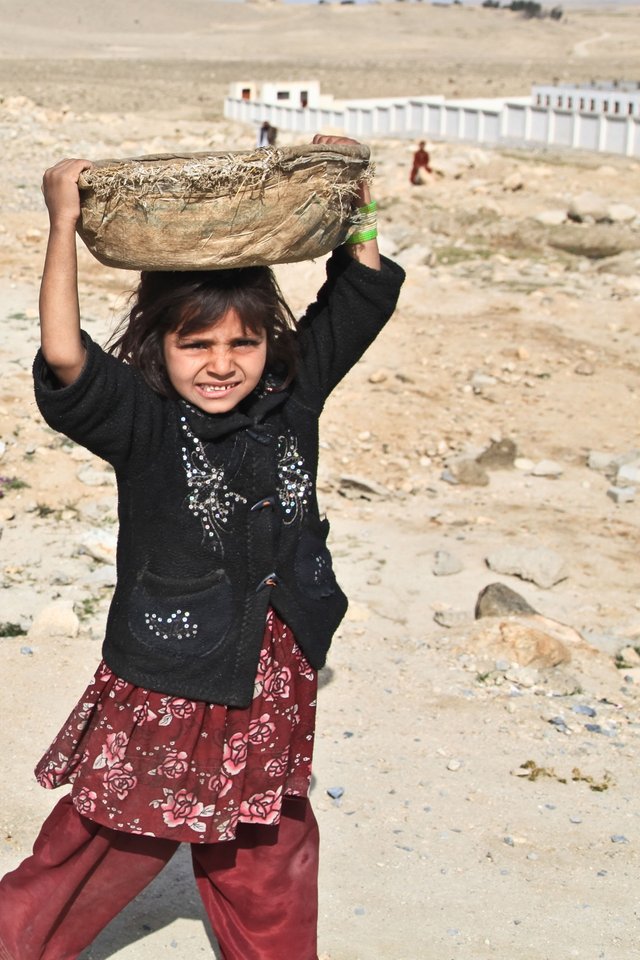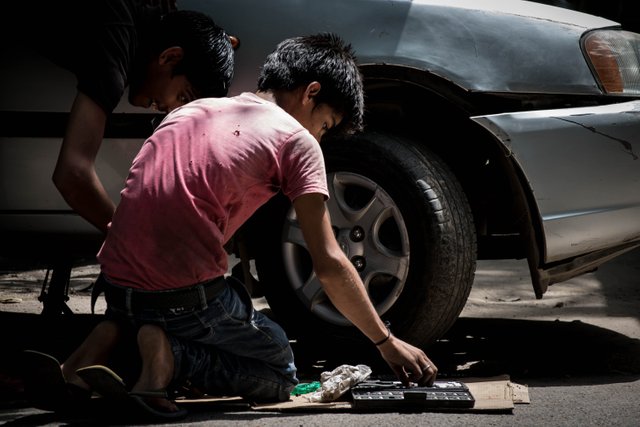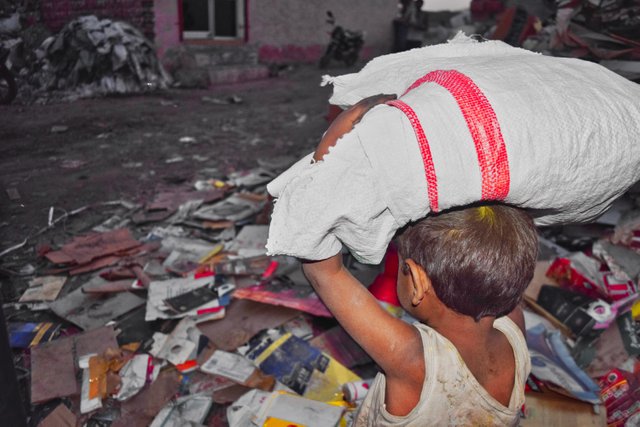The Morality Of Child Labor

From the peaceful and cozy environment of their luxurious offices and six-figure salaries, self-appointed NGO’s often criticize child labor as their workers dash from one five star hotel to another, $3500 subnotebooks and PDA’s(a palmtop computer that functions as a personal organizer but also provides email and Internet access) in hand. The hairsplitting distinction made by the ILO(International Labour Organization) between “child work” and “child labor” conveniently attacks poor countries while letting its budget contributors – the developed ones – free.
Reports regarding child labor surface periodically. Children crawling in mines, faces ashen, body deformed. The agile fingers of starved kids weaving soccer balls in Sialkot, Pakistan, for their more privileged counterparts in the USA. Tiny figures huddled in sweatshops, toiling in indescribable conditions. It is all distressing and it gives rise to a genuine not-so-cottage industry of activists, commentators, legal eagles, scholars, and so-called sympathetic politicians.

Ask the natives of Thailand, sub-Saharan Africa, Brazil, Pakistan, India, Bangladesh or Morocco and they will tell you how they regard this hyperactivity – with suspicion and anger. Underneath the compelling arguments hides an agenda of trade protectionism, they wholeheartedly believe. Firm_strict – and expensive – labor and environmental provisions in international treaties may well be a tactic to push away imports based on cheap labor and the competition they wreak on well-ensconced domestic industries and their political stooges.
Child labor – let alone child prostitution, child soldiers, and child slavery – are phenomena best avoided. But they cannot and should not be tackled in isolation. Nor should underage labor be subjected to blanket castigation. Working in the gold mines or fisheries of the Philippines is hardly comparable to waiting on tables in a Nigerian or, for that matter, American restaurant.
There are gradations and hues of child labor.
That children should not be exposed to hazardous conditions, long working hours, used as means of payment, physically punished, or serve as sex slaves is commonly agreed.
That they should not help their parents plant and harvest may be more debatable.
In many impoverished locales, child labor is all that stands between the family unit and all-pervasive, life-threatening, destitution. Child labor declines markedly as income per capita grows. To deprive these bread-earners of the opportunity to lift themselves and their families incrementally above malnutrition, disease, and famine – is an apex of immoral hypocrisy.
Regrettably, the debate is so laden with emotions and self-serving arguments that the facts are often overlooked.
The outcry against soccer balls stitched by children in Pakistan led to the relocation of workshops run by Nike and Reebok. Thousands lost their jobs, including countless women and 7000 of their progeny. The average family income – anyhow meager – fell by 20 percent.
Quoted by Wasserstein, former Secretary of Labor, Robert Reich, notes:
“Stopping child labor without doing anything else could leave children worse off. If they are working out of necessity, as most are, stopping them could force them into prostitution or other employment with greater personal dangers. The most important thing is that they be in school and receive the education to help them leave poverty.”
Contrary to the hype, three-quarters of all children work in agriculture and with their families. Less than 1 percent work in mining and another 2 percent in construction. Most of the rest work in retail outlets and services, including “personal services” – a substitute for prostitution. UNICEF and the ILO are in the agony of establishing school networks for child laborers and providing their parents with alternative employment.

Contrary to the hype, three-quarters of all children work in agriculture and with their families. Less than 1 percent work in mining and another 2 percent in construction. Most of the rest work in retail outlets and services, including “personal services” – a euphemism for prostitution. UNICEF and the ILO are in the throes of establishing school networks for child laborers and providing their parents with alternative employment.
But this is a drop in the sea of neglect. Poor countries rarely proffer(support of a particular argument) education on a regular basis to more than two-thirds of their eligible school-age children. This is especially true in rural areas where child labor is a widespread blight. Education – especially for women – is considered an unaffordable luxury by many hard-pressed parents. In many cultures, work is still considered to be indispensable in shaping the child’s morality and strength of character and in teaching him or her a trade.
“The Economist” elaborates:
“In Africa, children are generally treated as mini-adults; from an early age, every child will have tasks to perform in the home, such as sweeping or fetching water. It is also common to see children working in shops or on the streets. Poor families will often send a child to a richer relation as a housemaid or houseboy, in the hope that he will get an education.”
A solution recently gaining steam is to provide families in poor countries with access to loans secured by the future earnings of their educated offspring. The idea – first proposed by Jean-Marie Baland of the University of Namur and James A. Robinson of the University of California at Berkeley – has now permeated the mainstream.
Abusive child labor is abhorrent and should be banned and eradicated. All other forms should be phased out gradually. Developing countries already produce millions of unemployable graduates a year – 100,000 in Morocco alone. Unemployment is rife and reaches, in certain countries – such as Macedonia – more than one-third of the workforce. Children at work may be harshly treated by their supervisors but at least they are kept off the far more menacing streets. Some kids even end up with a skill and are rendered employable.
Thanks,
Best
Image Sources: https://pixabay.com/